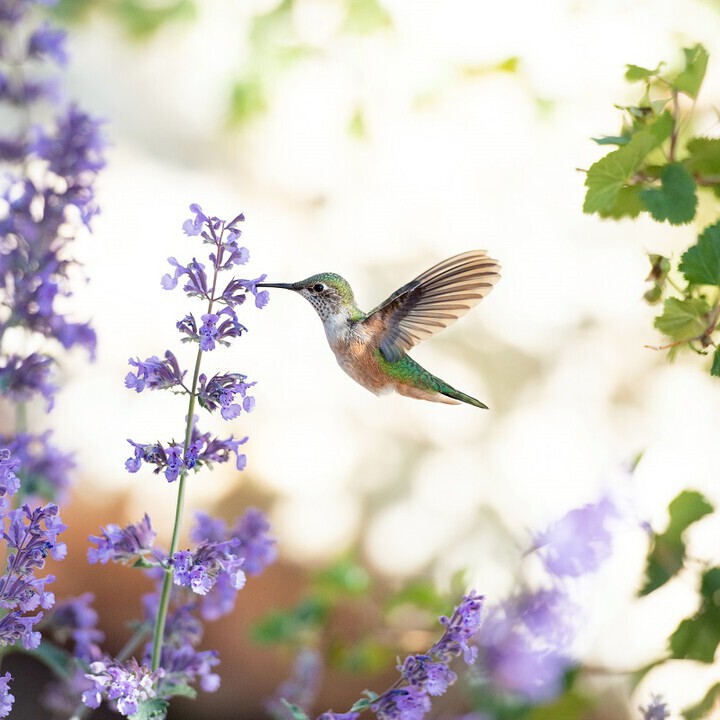Plant tubular flowers to draw these wondrous creatures to your yard.
Hummingbirds might be tiny, but they have hearty appetites and get their fill from a myriad of plant species found in gardens. In fact, it is thought that many plants, particularly the narrow and tubular varieties, have evolved over time to accommodate their long, slender bills. "Some flowers are so narrow they can only be pollinated by hummingbirds!" says Paddy Cunningham, birding expert at Bonnet House Museum & Gardens in Fort Lauderdale, Florida.

If you're looking to attract these small but wondrous birds to your garden, there are several basic elements you should include. Firstly, you must have some trees, shrubs, or vines nearby to create shelter and a sense of security, according to George Pisegna, Deputy Director and Chief of Horticulture at The Horticultural Society of New York in Manhattan. "The garden needs to have enough open space for the hummingbird to navigate from flower to flower, have brightly colored flowers (particularly red) that are tubular, and water, as hummingbirds love a gentle, continuous spray." To help guide you cultivate your own hummingbird oasis, here are the garden plants they love best, according to our experts.
Related: The Secret to a Garden Full of Hummingbirds Is Hiding in Your Pantry
Daylily
This bold and colorful flower is known for its trumpet-like shape, which comes in handy for hummingbirds as it allows them to reach the inside nectar more easily. This flower thrives in spring and fall, according to Lowe's live nursery expert, Lester Poole, and grow best in areas that receive at least six hours of direct sunlight.
Columbine
"This perennial is a cheerful plant with clover-shaped foliage and thin, airy, tubular stems," shares Valerie Ghitelman, Vice President of Product Development and Design, 1-800-Flowers.com. "Its flowers bloom in a wide range of colors such as red, yellow, white, blue, lavender, pink, and salmon." Hummingbirds tend to love columbines because they stick around—they're drought resistant and don't require much water.
Sage
You're probably most familiar with this plant for its use in the kitchen. Its family contains mints, basil, and salvias in a tremendous array of sizes and colors. "All provide long-lasting nectar sources, and by staggering the annual forms and the perennial forms you can have season-long nectar sources," says Poole. "Pineapple sage is a super source for hummingbirds, with large quantities of scarlet, tube-like blossoms throughout the summer and fall."
Lantana
This tubular flower comes in a variety of colors, most often yellow and purple. Because they are not likely to be grazed upon, they are left untouched for the hummingbird. "Lantanas are not only a three-toned showstopper, they're able to survive period of limited water supply making them extremely easy to care for," says Poole. "Lantanas are best suited for planting in warmer climates, as they grow best in hot, dry weather with a minimum of six hours of direct sun."
Honeysuckle
Also a tubular flower, hummingbirds are attracted to the honeysuckle for their sweet nectar, as it name suggests. "Hummingbirds adore these open-mouthed florals and are even more attracted to their bright red toned petals, which flower on and off throughout the year," says Poole. "These flowers prefer full, direct sun and grow extremely fast."
Pentas
These gorgeous bedding plants are fairly inexpensive, but can produce numerous flowers in a variety of colors and sizes for a few years, according to Cunningham. "Pentas have almost continuous blooms and can be used to edge beds in the smaller varieties or small bushes in the larger varieties," she says. "They can also be put into pots and hanging baskets for balconies and porches to attract hummingbirds."